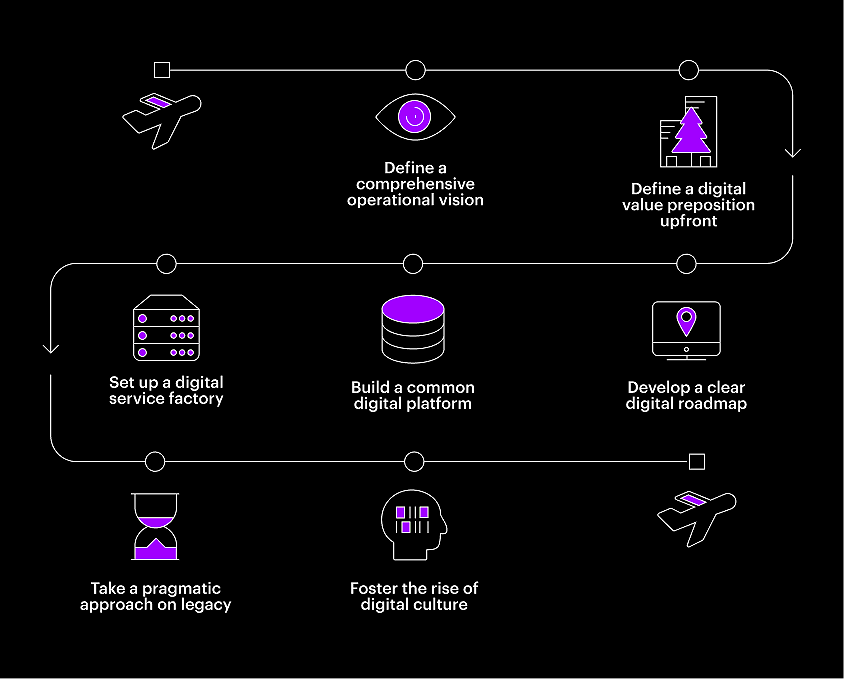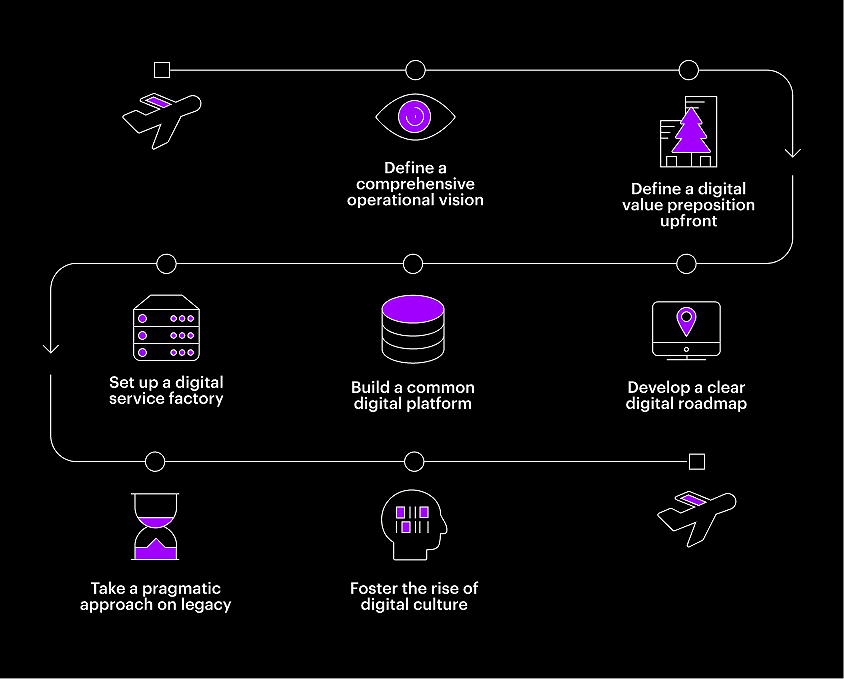RESEARCH REPORT
Destination digital in Aerospace and Defense
5-minute read
RESEARCH REPORT
5-minute read
Aerospace and defense companies are going through disruptive changes and are faced with overwhelming, competing challenges as they continue to navigate the impacts of the COVID-19 pandemic.
All these disruptive forces point to a singular conclusion: the need for digital transformation. Aerospace and defense executives acknowledge this and anticipate more than a two-fold increase in the sale of new digital services over the next five years.
We believe that companies that successfully adapt to the changing landscape and embrace digital will reap huge rewards, such as increased revenue, higher return on investment, greater shareholder returns and higher future value. Failing to act could have harmful repercussions.
Over 80% of aerospace and defense executives fear substantial cost escalations alongside losing significant market share if they fail to overcome organizational challenges for digital reinvention.
Companies that successfully embrace digital at the core of their businesses achieve up to four times improvement on their return on digital investments than other industry players (figure 1). Their digital returns even beat the industry average for returns on overall invested capital. What’s more, they’re successfully scaling more than 50% of their digital proofs-of-concept.


Figure 1: RODI for aerospace and defense champions
So, how can aerospace and defense companies realize the full potential they clearly identify? We have a three-point approach to help companies adapt to these disruptions, successfully embrace a digitally driven future and reap the rewards of doing so.
To harness the three-point approach and accelerate purposefully towards digital transformation, companies need to establish a cloud-enabled, Artificial Intelligence-powered, digital-first mindset, across all aspects of their business. That means putting digital at the heart of operations and building digital capabilities across the value chain. In addition, companies must pay careful attention to transformation management to establish a working culture in which digital initiatives can thrive.
A successful digital transformation will rest on defining clear objectives at the outset – companies must set a destination with a comprehensive digital vision. This needs to be broad enough to encompass their own organization and the wider ecosystem, as well as articulate what the vision means for all their stakeholders. The digital value proposition must also be defined upfront, with a clear idea of the performance drivers and strategic objectives that will inspire innovation and create value. With that vision set, companies must develop a digital roadmap, with clearly defined milestones.
To support their journey to digital transformation (figure 2), companies must build digital platforms to break down silos, maximize data and solution synergies, and reduce the cost of digitization by avoiding the need to ‘reinvent the wheel’ for each digital program. Deploying digital twins and digital threads can ensure smooth product lifecycle management across different functions and organizations.
At the same time, it is important to take a pragmatic approach to legacy technologies, with a multispeed IT approach that builds digital capabilities progressively. It’s also important to foster a digital culture to embed and sustain new ways of working across the organization.


Figure 2: Mapping the route to a digital future
Learn from leading industry experts why digitization, co-innovation and new business models are key to driving growth in the Aerospace and Defense industry.
Themes include how to go from delivering products to delivering services, how to innovate through collaboration across the ecosystem and why new business models are a game changer for the industry—and how digital technology can enable this ambition.